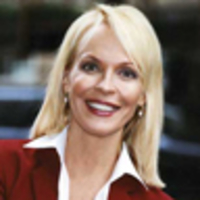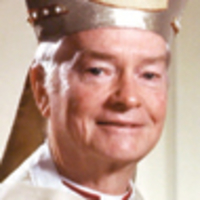
November 25, 1963. As I slowly climbed the familiar, winding steps to the elevated pulpit in the Cathedral of St. Matthew in Washington, D.C., I felt as numb and emotionally exhausted as every other American struggling to make sense of the stunningly brutal murder of the 35th president of the United States, John Fitzgerald Kennedy.
“I don’t like to hear people say that I am poised and maintaining a good appearance,” Jackie said, resentfully. “I am not a movie actress.”

My own grieving, however, would have to wait. First lady Jacqueline Kennedy had asked that I deliver the eulogy for her husband—and my friend. Having met the dashing war hero and wealthy, if unknown Massachusetts congressman in the late '40s, our friendship had continued into the White House, where—when Catholic doctrine jousted with political instincts—I, secretly, counseled him.
ADVERTISEMENT
Still, I should not be standing where I was. Had the Kennedys followed church protocol, it would have been the Archbishop of Washington, Archbishop Patrick J. O’Boyle not I, an auxiliary bishop serving under him, giving the eulogy. But Jackie wanted me. So when Sargent Shriver pointed out that technically it had to be the archbishop, she dug in her heels.
“Absolutely not,” she snapped. “It’s going to be Hannan or no one. If they ask, just tell them I got hysterical and you couldn’t straighten me out.”
Following the requiem Mass at St. Matthew's Cathedral, the majestic funeral procession began its long, elegant journey to Arlington National Cemetery, where the president’s casket was placed on the mechanical platform suspended above his newly dug grave.
Moments later, Cardinal Cushing stepped forward to read the prayers of interment. Finishing, he lightly touched Jackie’s arm: “Now for Bobby’s remarks,” he murmured, per the funeral plan approved by the first lady. But she didn’t budge. “No,” she said quietly, “No.” Thinking she had simply forgotten the lineup, the cardinal repeated his verbal cue. “No,” Jackie replied even more firmly. “No. I said ‘No.’” With unerring instinct, she had correctly judged that enough had been said. Anything else would be anti-climactic. Unobtrusively, Bobby, adhering to his sister-in-law’s directive, slipped a paper back into his suit pocket. Stepping, purposefully, away from the others, the former first lady walked over to the unlit Eternal Flame, where, handed a torch, she reached down to ignite one of history’s most iconic symbols. Returning to her place, the Army officer in charge of the interment detail gallantly presented Jackie the crisply folded American flag. Taking our cue, Cardinal Cushing and I approached Mrs. Kennedy to offer our final words of condolence. Exhausted, her lovely face streaked with dried tears, she clasped my hand. “Thanks for the sermon,” she said. “I thought it was great.”
Nine days after her husband’s funeral, I got a call from Jackie, who was still living in the White House. She had decided to bring the bodies of the children she had lost—a stillborn daughter in 1956 and Patrick, who died three days after his August 1963 birth—from the Kennedy family cemetery in Hyannis, Massachusetts, to join their father in Arlington.
“Could you be ready Wednesday night [December 4],” she asked, “for the re-interment of the bodies of our two babies at Arlington?”
“Certainly.”
“All right,” Jackie said. “It will be very secret. An Army staff car will pick you up at the rectory. The driver will know where to take you but not why you’re there. Expect him about eight."
At the appointed hour the car arrived, whisking me to our rendezvous just outside the cemetery gates where Jackie, her mother, Janet Auchincloss, sister Lee Radziwill, and three or four other close friends were waiting. Getting into her limo, Jackie and I drove to Jack’s grave. "Since I wanted to keep this secret,” she explained, “I’ve spread the rumor that the re-interment will be tomorrow at noon.” (Her plan worked.)
Pulling up as close as possible to where the president now lay, we parked and got out. The sight of two such tiny, white caskets (holding such tiny, little bodies) was truly heartbreaking. Before starting the ceremony, Jackie and I placed each on the ground near their father’s fresh resting place. Conscious of the first lady’s fragile emotional condition, I offered only the short, prescribed prayers of the interment ceremony. When we were finished, Jackie immediately began talking to me as if her life depended on it—which perhaps it did. Less than two weeks before, this courageous 34-year-old woman had been robbed of her identity—wife and first lady—as she knew it. Besides grappling with the death of a man whom I believe she deeply loved and who died in her arms, his blood and brain matter spattered on her ladylike white gloves. The sheer rawness of profound loss was finally beginning to set in. That evening, strolling through Arlington’s melancholy reality, death—not only her husband’s but that of the children they conceived, and lost, together—was much on her mind.
She asked if she could have the ritual book and stole that I had used for the service. Gladly handing them over, their sheer physical reality seemed to unleash a flood of spiritual concerns that only a priest could help her work through: Why had God let this happen to Jack, who had so much more to give? What was our destiny in heaven? Did I think he was there? How would the children ever understand? What should she tell them?
Eventually the conversation turned more personal. How was she to carry on, create even a semblance of normal life? She appreciated the goodwill being lavished upon her, did not disdain those who tried to see and touch her (as if doing so, somehow secured a souvenir of the president), realized that the world now viewed her, not as a person, but a symbol of their own pain, expected to carry a banner not of her own making—all of this Jackie understood and appreciated. But she simply did not want to be a public figure; in fact, desperately wanted only to be private, someone whose character would be shaped by herself and her family.
The more she talked, the more Jackie’s real feelings surfaced—her comments frank and to the point. Particularly galling, she confided, was the public’s surprise at her stoicism while preparing—during—the funeral. Why had the press marveled so at her composure? It was the least she could do; Jack would have expected nothing less. “I don’t like to hear people say that I am poised and maintaining a good appearance,” she said, resentfully. “I am not a movie actress,” she declared, pausing, “ I am a Lee of Virginia.”
Sixteen days after the interment of her children, I received from Jackie the first of two handwritten letters (which, after much serious thought I decided to include) that refute, I believe, the misconception that the Kennedy marriage was one of convenience, not love, and that Jack’s infidelities had irreparably harmed a relationship, which from my close perspective was always grounded in true emotional conviction. Indeed, Jack was her future. Having never realistically visualized an existence without her husband, Jackie clearly now faced an appalling emptiness (as her words indicate), now that he was gone. For despite Jack Kennedy’s faults, Jackie had loved him until the end.
December 20, 1963
Dear Bishop Hannan,
I have meant to write to you for so long—to thank you for the most moving way only you could have read those words at the funeral, to thank you for the book and cloth from the children’s burial—for asking me to the December 22 Mass—for your help always to my husband in seeing the world the way he did.
If only I could believe that he could look down and see how he is missed and how nobody will ever be the same without him. But I haven’t believed in the child’s vision of heaven for a long time. There is no way now to commune with him. It will be so long before I am dead and even then I don’t know if I will be reunited with him. Even if I am I don’t think you could ever convince me that it will be the way it was while we were married here. Please forgive all this—and please don’t try to convince me just yet —I shouldn’t be writing this way. With my deep appreciation.
Respectfully,
Jacqueline Kennedy
In 1964, as John Kennedy’s May 29th birthday approached, Jackie, now living in New York, decided it appropriate to pray for the repose of her husband’s soul at the site of his funeral: St. Matthew’s Cathedral in Washington, D.C , asking that I both celebrate the Mass and deliver the homily. During the service, Jackie was extremely emotional and teary-eyed, so choked up, in fact, that, approaching her to exchange the peace of Christ, she could neither speak nor shake hands. Later, in another handwritten note, she explained that being back in St. Matthew's had simply been overwhelming.
June 1, 1964
Dear Bishop Hannan:
I do wish to thank you for the Birthday Mass—for making it so beautiful and so moving—for what you said about President Kennedy.
I am afraid that that—then hearing the Star Spangled Banner sung by the choir—were more than I could bear—and I felt as if time had rolled back 6 months—and I was in the same place in the same church I had been in in November—and all the efforts one had made since then—to climb a little bit of the way up the hill, had been for nothing—and I had rolled right back down to the bottom of the hill again.
That is why I could not bear to look at you when you came to speak to me—as I did not think I could control my tears—but I wanted you to know that was the reason.
You must know how grateful I am to you every day—for believing in and being a friend of John Kennedy when he was alive—and for bringing meaning out of the despair at his funeral and birthday Masses—and for the night in Arlington with our two children—and for your work now at the Kennedy Center. You will always be working for all the things he believes in—and I will always know that and be comforted.
I will try so hard to recover a little bit more myself—so that I can be of more use to my children—and just for the years that are left to me—though I hope they won’t be too many—And maybe one day soon I will feel strong enough to come and talk to you—With my deepest appreciation.
Respectfully,
Jacqueline Kennedy
Archbishop Philip M. Hannan served as a chaplain in the famed 82nd Airborne during WWII. In post-war Washington, he hit it off with John Kennedy, who tapped Hannan as his behind-the-scenes adviser on Church doctrine during the Kennedy administration. Similarly, First Lady Jacqueline Kennedy handpicked Bishop Hannan to deliver the eulogy at President Kennedy’s 1963 funeral. In 1965, appointed the Archbishop of New Orleans, Hannan began a 20-year tenure championing civil rights. The above is an excerpt from his new memoir, The Archbishop Wore Combat Boots with Nancy Collins and Peter Finney Jr.
CORRECTION: This article originally stated that John F. Kennedy was the 43rd U.S. president. He was the 35th.







